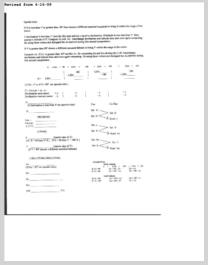
NavList:
A Community Devoted to the Preservation and Practice of Celestial Navigation and Other Methods of Traditional Wayfinding
Re: slide rule sight reduction accuracy
From: Gary LaPook
Date: 2009 Jun 18, 03:07 -0700
Here is the promised revised form.
gl
Gary LaPook wrote:
--~--~---------~--~----~------------~-------~--~----~
Navigation List archive: www.fer3.com/arc
To post, email NavList@fer3.com
To , email NavList-@fer3.com
-~----------~----~----~----~------~----~------~--~---
From: Gary LaPook
Date: 2009 Jun 18, 03:07 -0700
Here is the promised revised form.
gl
Gary LaPook wrote:
I have attached a revised form that carries the azimuth rules used with my version of the Bygrave. These are slightly different than the original rules with the original Bygrave due to my simplification of the scales. I omitted the second set of numbering on both scales, those running from 90 to 180, to keep the scales uncluttered. The results are the same as a value exceeding 90 will be found at exactly the same point on the scales using my method or using Bygrave's. For example, LHA 150, Hour Angle (H) 150 west on the original Bygrave will be found at 30 on my version, the same point that is also marked with "150" on the original Bygrave. The same thing happens for values on the cosine scale. The original Bygrave produced azimuths in the range of 0 to 180 and are always laid off from the opposite pole while with mine the azimuth is determined in the range of 0 to 90 and are laid off from either pole as determined by the rules on the form. Here is a link to my original post: http://www.fer3.com/arc/m2.aspx?i=107414&y=200902 (Note I made an error in the explanation of the sample problem, the declination is 20 north not 14 north. I also used a form for the illustration using Byrave's "y" instead of my "W".) Due to my simplified scales I introduced on additional intermediate value "X" and, for clarity's sake, I replaced Bygrave's lower case "y" with "W". Then using "W" with "X" I derive a "Y" in restricted to the range of 0 to 90. Using my method computes the same values as when using the original Bygrave. Notice that "X" determines the final Zn. If "X" exceeds 90 then Zn is laid off from the nearer pole and from the far pole when "X" is less than 90. Here is a link to the Bygrave manual: http://www.fer3.com/arc/img/107419.bygrave-manual.pdf gl Paul Hirose wrote:Regarding the Bygrave simulation, it can be done if I know the rules. For instance, azimuth is obtained by taking an arctangent, but that function yields a result between -90 and +90. There must be some rule to convert that to the range 0 to 360.
--~--~---------~--~----~------------~-------~--~----~
Navigation List archive: www.fer3.com/arc
To post, email NavList@fer3.com
To , email NavList-@fer3.com
-~----------~----~----~----~------~----~------~--~---







